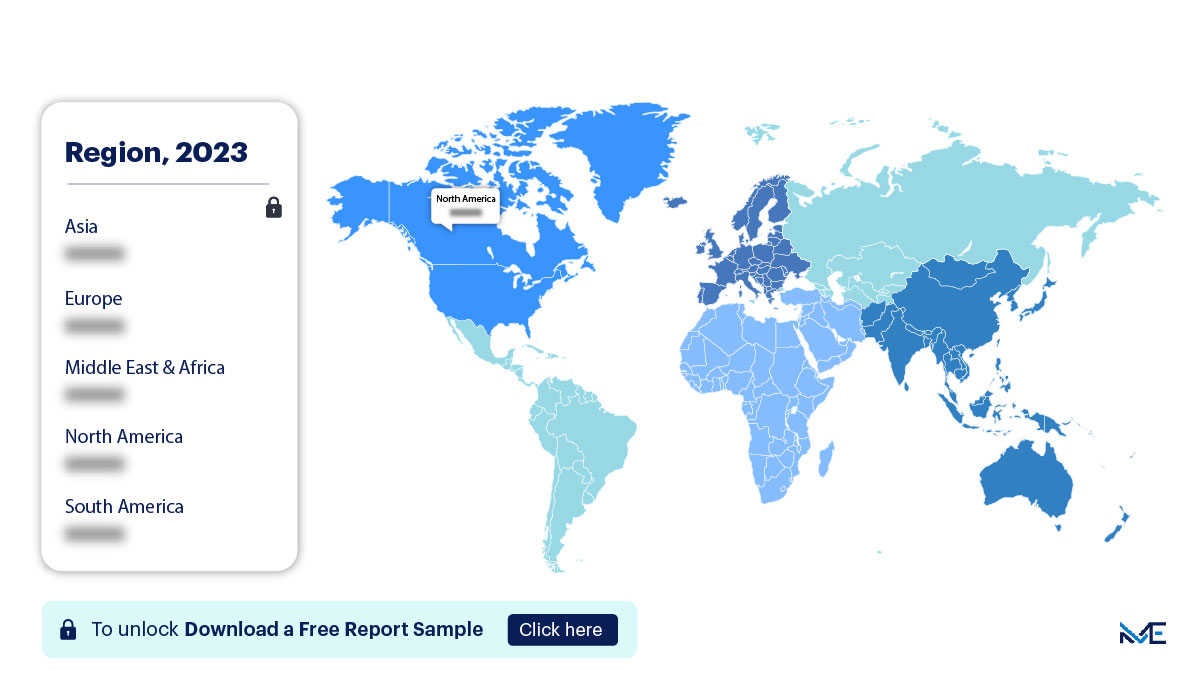Market Snapshot
| Study Period | 2019-2032 |
| Base Year | 2023 |
| Forcast Year | 2023-2032 |
| CAGR | 6.81 |


Gain accurate insights regarding the negative impacts of COVID-19 on all markets and industries
Download Sample PdfReport Overview
The Isobutyric Acid Market size is estimated to grow at a CAGR of 5.2% between 2022 and 2032. The market size is forecast to increase by USD 740.82 million. The growth of the market depends on several factors, including the expanding applications of isobutyric acid in various industries, the rise in demand for synthetic rubber and lubricants, and its use as a flavoring agent in the food industry. Isobutyric acid, also known as 2-methylpropanoic acid, is a carboxylic acid with a pungent odor. It is a colorless liquid with various industrial applications.
Isobutyric Acid Market Overview:
Drivers:
One of the key factors driving the Isobutyric Acid Market is its increasing use in the production of synthetic rubber. Isobutyric acid is a vital component in the manufacturing process of synthetic rubber, which is extensively used in the automotive industry for tire production. With the growing automotive sector and the demand for high-quality tires, the demand for isobutyric acid has witnessed a significant upswing.
Moreover, isobutyric acid finds applications in the production of lubricants and hydraulic fluids, contributing to its market growth. Its ability to enhance the lubricating properties of oils and greases makes it valuable in industries requiring efficient machinery and equipment operation.
Trends:
A key trend shaping the Isobutyric Acid Market is its utilization as a flavoring agent in the food industry. Isobutyric acid is employed to impart a cheesy or creamy flavor to various food products, including cheese, butter, and other dairy items. This trend aligns with the growing consumer demand for unique and appealing flavors in food products, thus boosting the market's growth.
Furthermore, the chemical industry is witnessing an increasing adoption of isobutyric acid in the synthesis of various organic compounds and esters, which are used in the production of fragrances and perfumes. This trend is likely to fuel the demand for isobutyric acid in the coming years.
Restraints:
One of the key challenges hindering the Isobutyric Acid Market growth is the availability of alternative chemicals with similar properties. Some chemicals, such as isovaleric acid and valeric acid, can serve as substitutes for isobutyric acid in certain applications. This competition from alternative compounds can affect the market's expansion.
Additionally, environmental regulations and concerns related to the production and disposal of isobutyric acid may pose challenges for market players. Compliance with stringent environmental standards and waste management practices is essential to mitigate these concerns.
Isobutyric Acid Market Segmentation:
By Application:
- Rubber Industry: The rubber industry is expected to witness substantial growth in the use of isobutyric acid due to its role in synthetic rubber production.
- Food and Beverage Industry: Isobutyric acid's use as a flavoring agent in the food and beverage sector is a significant application segment.
- Chemical Industry: The chemical industry utilizes isobutyric acid in the synthesis of various organic compounds, including fragrances and perfumes.
By Type:
- Industrial Grade: Industrial-grade isobutyric acid is used primarily in the rubber and chemical industries.
- Food Grade: Food-grade isobutyric acid is utilized in the food and beverage industry for flavor enhancement.
Regional Overview:

Download the report summary now!
Request pdf Sample
North America: The Isobutyric Acid Market in North America is expected to benefit from the robust automotive sector and the demand for synthetic rubber in tire manufacturing.
Europe: Europe's market growth is driven by the food and chemical industries, where isobutyric acid is used extensively.
Asia-Pacific (APAC): APAC is anticipated to witness significant growth due to the expanding automotive sector and increasing demand for synthetic rubber in countries like China and India.
South America: The South American market may experience growth, driven by the chemical industry's use of isobutyric acid in fragrance production.
Middle East & Africa: In this region, the Isobutyric Acid Market may see growth due to industrial applications in various sectors.
Isobutyric Acid Market Customer Landscape:
The Isobutyric Acid Market report includes an analysis of the adoption lifecycle, from innovators to laggards, and explores adoption rates in different regions based on penetration. It also covers key purchase criteria and drivers of price sensitivity to assist companies in developing their growth strategies.
Major Isobutyric Acid Market Companies:
Companies in the Isobutyric Acid Market are employing various strategies, including strategic alliances, partnerships, mergers and acquisitions, geographical expansion, and product/service launches, to enhance their market presence.
- Eastman Chemical Company: This company offers a range of isobutyric acid grades, including industrial and food-grade variants.
- Kuraray Co., Ltd.: Company B is a leading player in the Isobutyric Acid Market, providing high-quality isobutyric acid for industrial applications.
- Sinopec Corporation: Company C specializes in food-grade isobutyric acid, catering to the food and beverage industry's flavoring needs.
The Isobutyric Acid Market report also offers detailed competitive landscape analyses of 20 market companies, including:
- Eastman Chemical Company
- Perstorp Holding AB
- Oxea GmbH
- Dow Chemical Company
- BASF SE
- Mitsubishi Chemical Corporation
- Celanese Corporation
- Daicel Corporation
- Wacker Chemie AG
- Kuraray Co., Ltd.
- Evonik Industries AG
- Arkema SA
- LG Chem Ltd.
- LyondellBasell Industries N.V.
- Sinopec Corporation
- Formosa Plastics Corporation
- Ineos Group Holdings S.A.
- Solvay SA
- Sumitomo Chemical Co., Ltd.
- Huntsman Corporation
Qualitative and quantitative analyses of these companies are conducted to help clients understand the broader business environment and the strengths and weaknesses of key market players.
Segment Overview:
The Isobutyric Acid Market report forecasts market growth by revenue at global, regional, and country levels and provides an analysis of the latest trends and growth opportunities from 2019 to 2032.
- Application Outlook (USD Million, 2019 - 2032):
- Rubber Industry
- Food and Beverage Industry
- Chemical Industry
- Type Outlook (USD Million, 2019 - 2032):
- Industrial Grade
- Food Grade
- Geography Outlook (USD Million, 2019 - 2032):
- North America
- The U.S.
- Canada
- Europe
- U.K.
- Germany
- France
- Rest of Europe
- APAC
- China
- India
- South America
- Chile
- Argentina
- Brazil
- Middle East & Africa
- Saudi Arabia
- South Africa
- Rest of the Middle East & Africa
RESEARCH METHODOLOGY
A research methodology is a systematic approach for assessing or conducting a market study. Researchers tend to draw on a variety of both qualitative and quantitative study methods, inclusive of investigations, survey, secondary data and market observation.
Such plans can focus on classifying the products offered by leading market players or simply use statistical models to interpret observations or test hypotheses. While some methods aim for a detailed description of the factors behind an observation, others present the context of the current market scenario.
Now let’s take a closer look at the research methods here.
Secondary Research Model
Extensive data is obtained and cumulated on a substantial basis during the inception phase of the research process. The data accumulated is consistently filtered through validation from the in-house database, paid sources as well reputable industry magazines. A robust research study requires an understanding of the overall value chain. Annual reports and financials of industry players are studied thoroughly to have a comprehensive idea of the market taxonomy.
Primary Insights
Post conglomeration of the data obtained through secondary research; a validation process is initiated to verify the numbers or figures. This process is usually performed by having a detailed discussion with the industry experts.
However, we do not restrict our primary interviews only to the industry leaders. Our team covers the entire value chain while verifying the data. A significant number of raw material suppliers, local manufacturers, distributors, and stakeholders are interviewed to make our findings authentic. The current trends which include the drivers, restraints, and opportunities are also derived through the primary research process.
Market Estimation
The market estimation is conducted by analyzing the data collected through both secondary and primary research. This process involves market breakdown, bottom-up and top- down approach.
Moreover, while forecasting the market a comprehensive statistical time series model is designed for each market. Macroeconomic indicators are considered to understand the current trends of the market. Each data point is verified by the process of data triangulation method to arrive at the final market estimates.
Final Presentation
The penultimate process results in a holistic research report. The study equips key industry players to undertake significant strategic decisions through the findings. The report encompasses detailed market information. Graphical representations of the current market trends are also made available in order to make the study highly comprehensible for the reader.
Personalized Business Report Tailored to Your Requirements
- Our expert analysts collaborate directly with you to comprehend your specific needs.
- Get data on regions, segments, competitors, and vendors of your choice.
- Information is presented in alignment with your exact preferences and formatting.
Free Sample Report
"Find new revenue generation opportunities"

